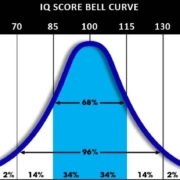Parents often ask me how much progress their children with disabilities are “expected” to make for Districts to be compliant with FAPE (Free Appropriate Public Education). I tell them that the Supreme Court has determined that Districts must provide enough special education supports and services to ensure that children with disabilities receive “some educational benefit.” Well now that that is clear . . .
So lower courts have been given the task of deciding how much progress there has to be to meet the standard of “some educational benefit.” Now a brief explanation of our judicial system is needed. As you may know, the Supreme Court is the highest court in the U.S. and it’s decisions apply to all federal (and sometimes state) courts. However, the U.S. map is divided into 12 different “circuits.” For instance, the Second Circuit includes New York, Connecticut, and Vermont. Each “Circuit” may interpret Supreme Court rulings in different ways. As you can see, this can lead to a great deal of confusion. When this occurs, the Supreme Court may decide to settle these differing opinions.
So getting back to “educational benefit.” There is a difference or “split” among the Circuits. Some Circuits, such as the 10th Circuit, interpreted the Supreme Court’s guidance literally and have ruled that “some educational benefit” means just that – any educational benefit. However, other Circuits have looked at the Supreme Court decision more realistically and have said that the Supreme Court could not possibly have meant just a little benefit. Let’s face it. Reading at a 2nd grade level at the beginning of a school year and finishing at a 2.1 grade level at the end of the year really isn’t an educational benefit in any meaningful way. Hmm. Maybe we should require that IEPs (Individualized Education Programs) provide the student with at least a “meaningful educational benefit.” And that is just the standard that some courts have adopted.
Now obviously, determining whether an IEP results in “some educational benefit” is not that difficult. However, what does “meaningful” mean? That’s where the arguing comes in. Would six months of reading progress in a school year be enough? 12 months? You can see why a court would be tempted to stick with the literal standard the Supreme Court put forth.
So the Supreme Court has decided it will weigh in (and they weigh a lot!) on this question. We shall see what the Supreme Court says. But don’t get your hopes up. The Court often refrains from making specific sweeping rulings. And often their decisions wind up creating more questions than they answer. So even if the Court specifically says that the IDEA (Individuals with Disabilities Education Act) requires that an IEP must provide a student with “meaningful” or “significant” or some other standard of educational benefit, don’t count on them giving any guidance on how much progress would be considered to be meaningful. However, this would be great news for all those children who are currently in the “some educational benefit” circuits.
Stay Tuned!







